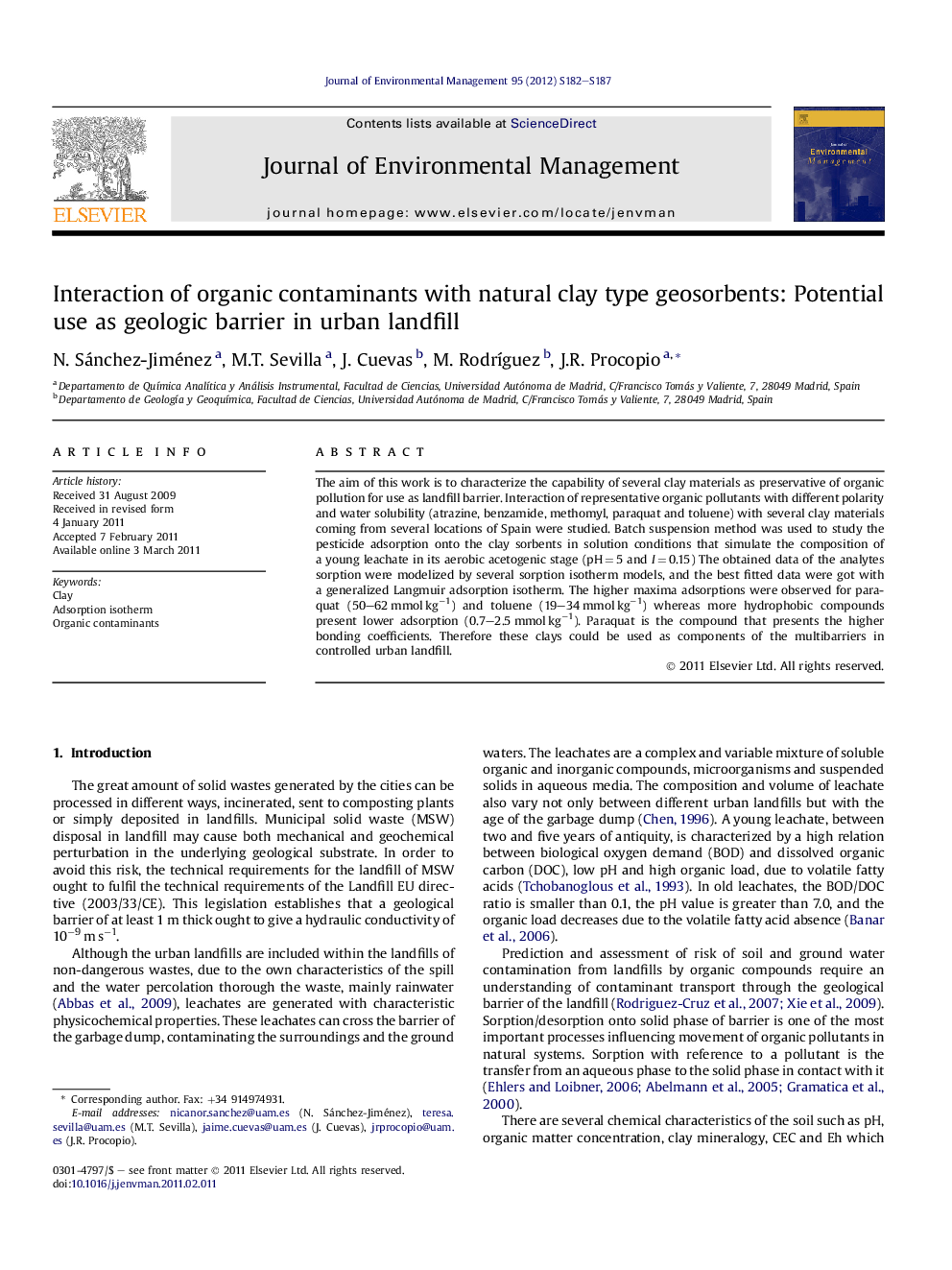| Article ID | Journal | Published Year | Pages | File Type |
|---|---|---|---|---|
| 1057050 | Journal of Environmental Management | 2012 | 6 Pages |
The aim of this work is to characterize the capability of several clay materials as preservative of organic pollution for use as landfill barrier. Interaction of representative organic pollutants with different polarity and water solubility (atrazine, benzamide, methomyl, paraquat and toluene) with several clay materials coming from several locations of Spain were studied. Batch suspension method was used to study the pesticide adsorption onto the clay sorbents in solution conditions that simulate the composition of a young leachate in its aerobic acetogenic stage (pH = 5 and I = 0.15) The obtained data of the analytes sorption were modelized by several sorption isotherm models, and the best fitted data were got with a generalized Langmuir adsorption isotherm. The higher maxima adsorptions were observed for paraquat (50–62 mmol kg−1) and toluene (19–34 mmol kg−1) whereas more hydrophobic compounds present lower adsorption (0.7–2.5 mmol kg−1). Paraquat is the compound that presents the higher bonding coefficients. Therefore these clays could be used as components of the multibarriers in controlled urban landfill.
